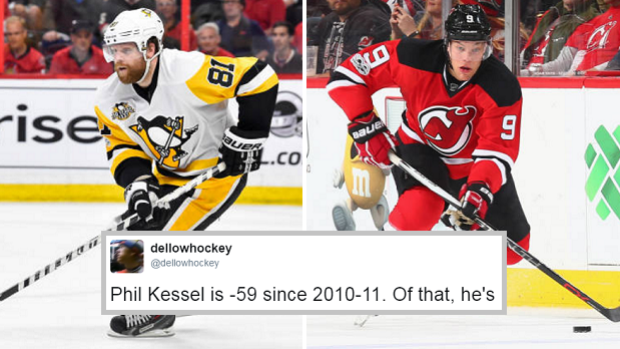Taylor Hall and Phil Kessel have been ragged on in their careers for poor defence and we’re not here to say that any of that is totally incorrect – just to add some context.
They are both players known for their offence, but if you want to be critical of their D, plus-minus is probably not the best stat. Part of the reason Corsi (Shot attempts) started becoming a more popular way to analyze players is because people were annoyed with plus-minus and its inaccuracies. However, even people familiar with these statistics may not be aware of how much noise there is in plus-minus.
The main part of that being that it includes empty net and short-handed goals against. Both of these are pretty rare occurrences and are usually quite fluky.
A former Edmonton Oilers advanced stats guru, Tyler Dellow, pointed out how misleading their inclusion can be based on players that have suffered from being on for empty net and shorthanded goals (He later pointed out he meant even strength, not 5v5).
He also tweeted out a full list of people who have suffered and benefitted from time on the ice for power plays or at the end of the game.
For the most part, the players on the list on the left are offensive talents that are likely to be on the ice at the end of the game and on the power play. It seems rather unfair to judge a player based on plus-minus, but if you’re going to, it would help to use even-strength instead.



